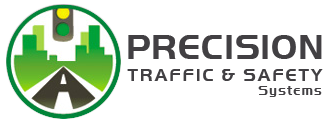In order to determine the best form of control for a given intersection, the first question that needs to be answered is: “Does the intersection meet traffic signal warrants?” Since, in most cases, an agency will not install a traffic signal unless it meets the major numerical warrant (warrant 1, condition A or B) or the crash experience warrant (warrant 7), the question can be made more specific: “Does the intersection meet warrant 1 or 7?” The remaining warrants may be applicable in certain instances and their use needs to be decided upon on a case-by-case basis.
If the Intersection Meets Signal Warrants
If one of the signal warrants is met, then the next question to answer is: “Will installation of a signal hurt coordination?” This can sometimes be determined through casual field observation. For example, if the intersection is more than one-half mile from the next signalized intersection or if is in the middle of a residential neighborhood, then the answer to this question is probably “no”. However, if it is located along a coordinated arterial or in close proximity to another signal, then an evaluation of time-space diagrams will probably be needed to answer this question definitively.
If the installation of a signal will not hurt coordinated flow, yet the signal is not desired (it will be costly, it will be ugly, the neighbors oppose it, the local agency doesn’t want the cost of maintaining it, signal proliferation is frowned upon, etc.), then the next question to answer is “Does the intersection meet the all-way STOP warrant?” If it meets the all-way STOP warrant (and there is a good chance it will since it met signal warrants) then we need to decide if intersection volumes are too high to make all-way STOP control (AWSC) feasible.
Consequently, if the sum of the entering volumes at an intersection is greater than 1400 then a higher-capacity solution (such as a roundabout or signal) will be needed. This gives rise to the next question:
“Is the sum of the entering volumes during the peak hour greater than 1400?” If the answer to this question is “no” then either AWSC or a roundabout will work. However, if the answer is “yes”, then you need to decide if intersection volumes are too high to make roundabout installation feasible.
This is done by performing a detailed operational analysis using the SIDRA computer program. If SIDRA determines that the 95th percentile queue length on any approach is 15 vehicles or greater, then a roundabout is not considered feasible and a signal is needed, otherwise a roundabout can be installed.
The 15 vehicle value is merely a reasonable value, it is not based on any analytical derivation. If agency personnel consider this value to be either too large or too small from a public acceptance standpoint, it could be varied accordingly.
